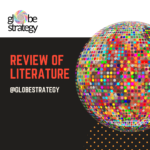This is always a work in progress as new sources are identified and added.
International Entrepreneurship – |International entrepreneurship, born globals and the theory of effectuation |
Internationalisation process | Internet-enabled experiences within the internationalisation process of the firm|Impact of Internationalization on Firm Performance: A Literature Review | Development of a business model for the internationalisation | The Internationalisation process of the firm | The Internationalisation of the firm – 4 case from Sweden |
Firm Capabilities – | Business Capabilities: A Systematic Literature Review and a Research Agenda |
Managing Risk – Enterprise Risk Management |
Geopolitics and International Business – Debate on new global capitalism |Geopolitics and supply chain risk |Geopolitics, Geography, and Strategy History in Geopolitics |Measuring Geopolitical Risk |


